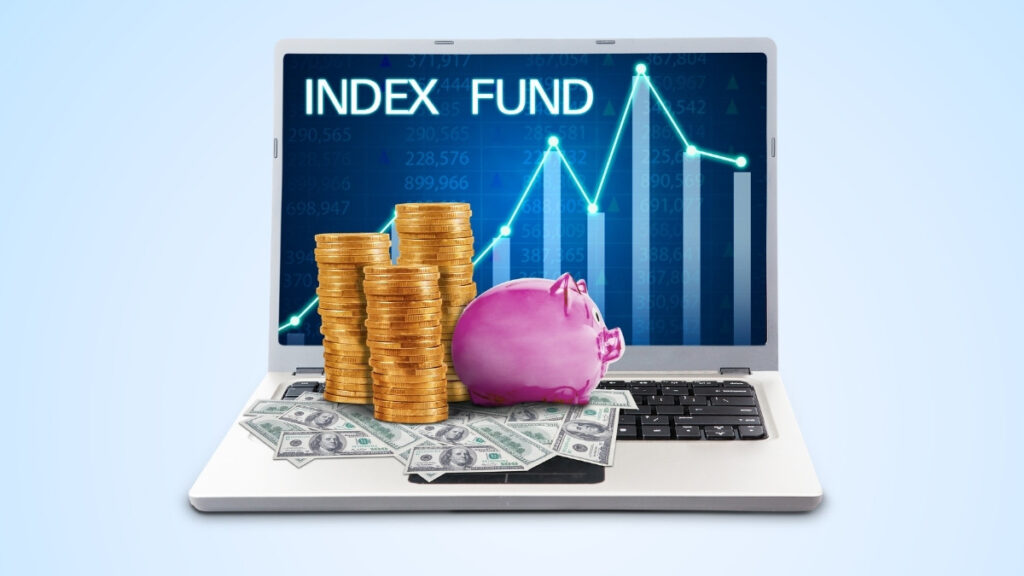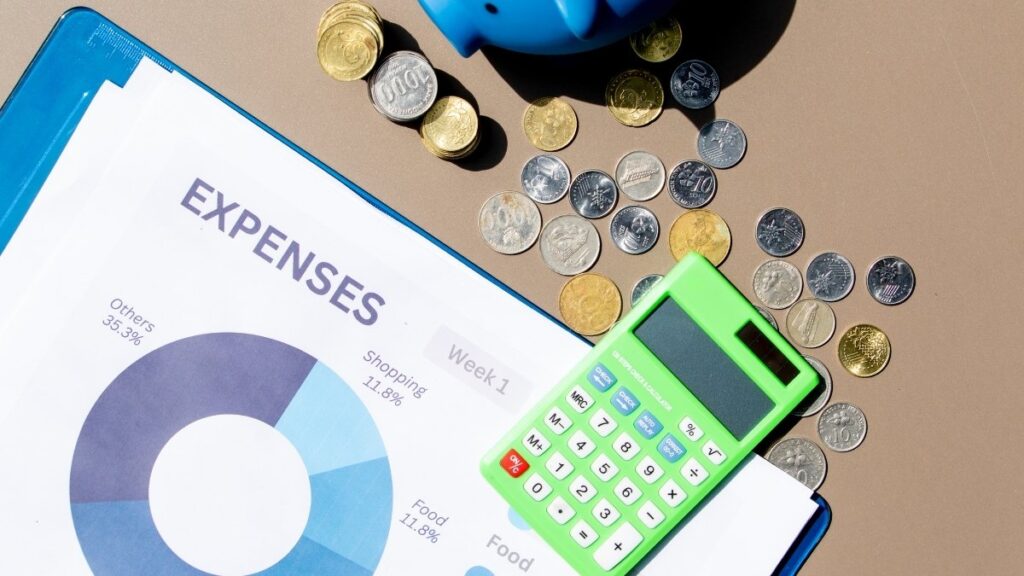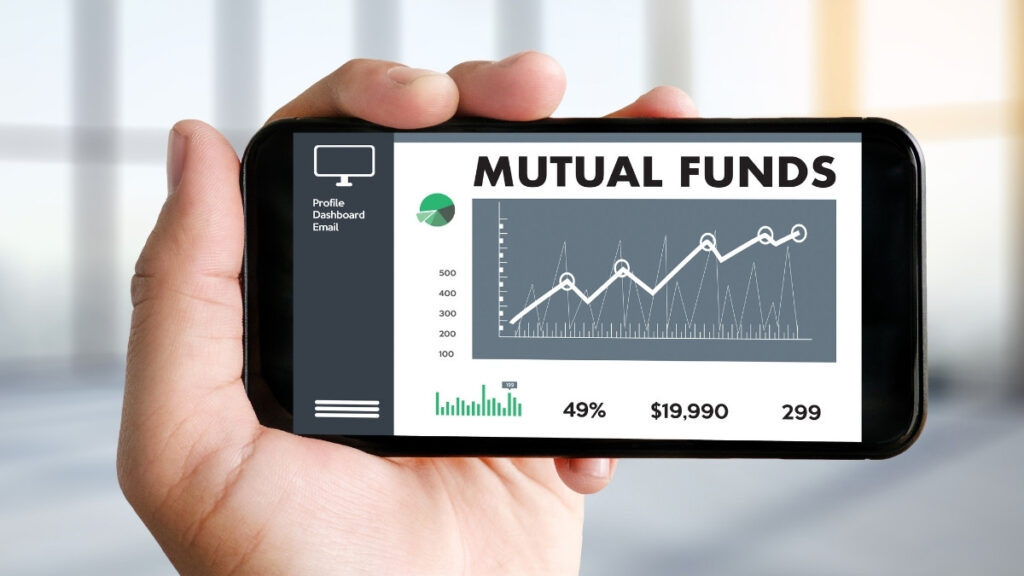
“Your Vanguard Total Stock Market ETF (VTI) charges just 0.03% annually. But research from 2025 shows you’re actually paying closer to 0.35%—and you’ll never see this cost on your statement.”
This staggering difference highlights the issue: index funds mechanically buy and sell stocks during rebalancing, creating systematic patterns of buying high and selling low that adversely affect returns in ways expense ratios never capture, as noted by Morningstar on The Hidden Costs of Passive Investing.
You’re about to discover the three hidden costs that are truly costing you between 0.32% and 0.81% yearly, and why your fund statement completely fails to show these losses or the resulting tracking error. Crucially, you’ll learn about a specific alternative, the DFUS fund, that has outperformed VTI by 56 basis points annually since June 2021 by strategically avoiding these rebalancing costs, and how you can implement this smarter strategy today.
SECTION 1: The Three Hidden Costs Destroying Your Returns
What Index Fund Hidden Costs Actually Are (And Why You Can’t See Them)
When VTI announces it’s buying a newly IPO’d company, something costly happens. The stock price jumps. Then VTI buys at the higher price. You just paid more than you needed to.

💡 Quick Tip: Check when your index fund last rebalanced. Those dates are when these hidden costs hit your returns hardest.
This is adverse selection. Index funds buy when companies issue new stock. Companies usually issue stock when prices are high. Index funds sell when companies buy back their own stock. Companies usually buy back stock when prices are low. You’re buying high and selling low—over and over.
💡 Action Step: Look at your fund’s holdings list. Notice how many recent IPOs are in there? Each one likely cost you money through price impact.
The numbers are brutal. A portfolio that copies index rebalancing loses 4% per year. That’s before fees. The negative five-factor alpha is 2.8% annually. This means even after accounting for size, value, profitability, and investment factors, index rebalancing still destroys returns.
💡 Reality Check: If you invested $100,000, adverse selection alone costs you about $320 per year. That’s more than 10 times VTI’s expense ratio.
Price impact is the second killer. When stocks get added to indexes, prices spike 6% to 10% before index funds buy them. A June 2025 study by Iro Tasitsiomi documented this clearly. The price jumps, index funds buy at the peak, then the price falls back down after they finish buying.
💡 Watch For: News about stocks being added to the S&P 500 or Russell indexes. The price spike happens fast—usually within days of the announcement.
Mean reversion is the third problem. Stocks added to indexes trade at 92% higher valuations than the overall market. Stocks removed from indexes are 55% cheaper. Index funds buy the expensive ones and sell the cheap ones. This is the opposite of smart investing.
💡 Simple Math: If a stock normally trades at $100, it’s at $192 when it enters the index. The index fund buys it there. When it drops back to $100, you’ve lost 48% on that position.
Research from 1981 to 2023 shows that delaying rebalancing beats quarterly calendar rebalancing by 0.32% to 0.81% per year. That difference compounds. Over 30 years, 0.5% annually turns $100,000 into $116,000 more.
💡 Key Insight: Traditional index funds follow rigid rules. They must buy and sell on specific dates. This makes them predictable. Other traders profit from this predictability. You pay for it.
These costs are invisible because they affect both the fund AND the benchmark identically. Your fund tracks the index perfectly. But both are losing money to these trading costs. It’s like comparing two cars both getting bad gas mileage—they match each other, but both waste fuel.
💡 Bottom Line: Your index fund might show zero tracking error. That doesn’t mean zero trading costs. The benchmark has the same costs built in.
SECTION 2: Why Bill Sharpe’s Famous Formula Has a Flaw
The Arithmetic of Active Management Assumed Zero Trading
Bill Sharpe won a Nobel Prize. His 1991 paper “The Arithmetic of Active Management” is famous. It proved that active managers can’t all beat the market. But there’s a problem with his math.

💡 Historical Context: Sharpe’s paper came out when index funds were new. Trading costs weren’t well understood yet. His assumption made sense at the time.
Sharpe assumed passive managers buy securities before the measurement period starts. They don’t sell until after the period ends. In his model, they don’t trade at all during the period. That’s not how real index funds work.
💡 Key Question: Look at your latest fund statement. Does it show turnover? If yes, your fund is trading. If it’s trading, Sharpe’s formula doesn’t fully apply.
In footnote 4 of his paper, Sharpe admitted something important. When passive managers do trade, active managers may gain from them by providing liquidity at a price. He buried this in a footnote. Most people missed it.
💡 Why This Matters: Sharpe acknowledged the problem but didn’t change his conclusion. The famous takeaway—”passive always wins”—ignores this caveat.
Real-world research shows active managers in aggregate have pre-fee returns above index funds. The problem? Their fees are too high. The average active fund charges 0.60% to 1.00% per year. That eats up the benefit they get from avoiding index rebalancing costs.
💡 Food for Thought: If active managers can beat indexes before fees, the issue isn’t skill. It’s price. What if you could get the benefit without the high fees?
Think about the dot-com era. Companies rushed to go public in 1999 and 2000. Index funds had to buy these IPOs. Many of them crashed 90% or more in the next two years. Active managers could wait and see. Index funds couldn’t.
💡 Example: If you bought the average 1999 tech IPO and held it, you lost about 70% of your money by 2002. Index funds had to buy these. Active managers could skip them.
Companies time their stock issuance carefully. They issue new shares when their stock price is high. Research shows this clearly. Index funds must buy these new shares. This is adverse selection at work.
💡 Stat to Remember: Studies show companies that issue stock underperform the market by 3% to 5% per year for the next three to five years. Index funds buy them anyway.
As Joel Schneider of Dimensional stated in September 2025, trading costs may cost as much as the expense ratio. Your 0.03% expense ratio fund might have 0.03% in trading costs too. That doubles the true cost to 0.06%. But he was being conservative. The real trading costs are much higher.
💡 Reality Check: If trading costs equal the expense ratio, your “low-cost” 0.03% fund actually costs 0.06%. But research suggests the real number is closer to 0.35% to 0.50%.
The arithmetic of active management is still true in one sense. As a group, all investors must earn the market return before costs. But Sharpe’s math assumed passive investing had no costs beyond the expense ratio. That assumption was wrong.
💡 Key Takeaway: The formula still works if you add in passive investing costs. But when you do, the gap between good active management and passive investing shrinks considerably.
SECTION 3: The Real Cost of Your 0.03% Index Fund
Your VTI Expense Ratio Is 0.03%. The True Cost? Closer to 0.53%.
You probably chose VTI because it costs 0.03% per year. That’s $30 per year on $100,000. Cheap, right? Not exactly.

💡 Check Your Thinking: When you picked your index fund, did you only look at the expense ratio? Most investors do. That’s what the fund companies want you to focus on.
The estimated adverse selection cost alone is 0.32% per year. That’s $320 annually on your $100,000. Add in price impact costs of about 0.10%. That’s another $100. Mean reversion costs another 0.08%, or $80 more.
💡 Do This Math: Take your portfolio value. Multiply by 0.0053 (that’s 0.53%). That’s what you’re really paying per year in total costs.
Here’s the full breakdown:
VTI Expense Ratio: 0.03%
+ Adverse Selection Cost: 0.32%
+ Price Impact Cost: ~0.10%
+ Mean Reversion Cost: ~0.08%
= True Total Cost: ~0.53%
💡 Visual Learning: Write these numbers down. Put them next to your fund’s stated expense ratio. The difference will shock you.
Research on S&P 500 index funds from 1990 to 2005 found costs of 0.21% to 0.28% annually. That’s the lower end. In 2000, during the peak of index rebalancing from tech stock additions, costs hit 0.65% to 0.82% per year.
💡 Historical Pattern: Hidden costs spike when there’s lots of index rebalancing. That happens during market bubbles and crashes. Exactly when you want low costs most.
On $100,000 invested, these hidden costs run $320 to $810 per year depending on market conditions. That’s real money leaving your account. You just can’t see it on your statement.
💡 Quick Calculation: Open a compound interest calculator. Compare 7% returns (market average) to 6.5% returns (market minus 0.5% hidden costs). Over 30 years on $100,000, that’s a difference of $154,000.
Dimensional’s research using different index rules found that delayed rebalancing strategies could add up to 0.23% to returns. That’s money left on the table by traditional index funds. The benefit comes from not rushing to trade on arbitrary dates.
💡 Think About It: Your index fund rebalances quarterly. What if it waited an extra 30 days when prices are unfavorable? That patience would save you money.
Why don’t these costs appear on your statements? Because they’re opportunity costs, not direct charges. The fund doesn’t write a check to someone. It just pays more than necessary when buying and receives less than possible when selling.
💡 Analogy: It’s like buying concert tickets. The face value is $100, but you pay a scalper $150 because you waited until the last minute. The extra $50 doesn’t show up as a “fee.” You just paid more than you needed to.
Compare this to paying a financial advisor 1%. Investors scrutinize that carefully. They negotiate. They shop around. But they miss the 0.53% hidden in their index fund. That’s because one is visible and one isn’t.
💡 Action Item: Ask yourself—would you pay 0.53% for a fund that rigidly follows index rules? Or would you pay 0.09% for a fund that avoids these trading costs?
Let’s make this concrete. You invest $100,000 in VTI. Over 30 years at 7% returns (after the 0.03% fee but ignoring hidden costs), you’d have $761,000. Now factor in the 0.50% hidden costs. At 6.5% net returns, you end up with $648,000. That’s $113,000 less.
💡 Reality Pill: The difference between stated fees and true costs on a $100,000 portfolio over 30 years is more than $100,000. That’s not a rounding error. That’s real retirement money.
The largest index funds like VTI manage over $300 billion. Even 0.30% in hidden costs means $900 million in lost returns for investors each year. Spread across millions of investors, it’s hard to notice. But it’s real.
💡 Final Point: Index funds work great for beating high-fee active funds. But that doesn’t mean they’re optimal. There’s a better way that most investors don’t know about.
SECTION 4: The Solution: Non-Indexed Index Funds
How Flexible Index Funds Capture Returns Without the Costs
Traditional index funds follow rigid rules. They must buy and sell on specific dates. Flexible index funds follow a different approach. They aim for the same market exposure but trade smarter.

💡 Key Concept: Think of it like driving to work. Traditional index funds take the same route every day at the same time, even when there’s traffic. Flexible funds take the same route but leave 10 minutes earlier to avoid traffic.
The flexibility shows up in several ways. These funds delay IPO purchases for 6 to 12 months. They exclude small-cap stocks with high valuations and low profitability. They skip small caps with high asset growth. They rebalance more patiently.
💡 Why This Works: New IPOs often drop in price after the initial hype. Waiting 6 months means buying at a better price. You still own the market—you just paid less for it.
Dimensional Fund Advisors created this approach. They implement broad market exposure without rigidly following index reconstitution dates. When a stock gets added to an index, they don’t rush to buy it. They wait until the price settles.
💡 Smart Detail: Other traders know when index funds must buy. They front-run those purchases. Flexible funds don’t have fixed buying dates, so they can’t be front-run as easily.
There’s a tax benefit too. Better qualified dividend treatment means more of your dividends are taxed at the lower qualified rate instead of the higher ordinary income rate. This saves you money every year in taxable accounts.
💡 Tax Math: On $100,000 generating 2% in dividends, the difference between qualified and ordinary dividend treatment can save you $200 to $500 annually depending on your tax bracket.
Let’s look at a specific fund: DFUS (Dimensional U.S. Equity Market ETF). The expense ratio is 0.09%. That’s higher than VTI’s 0.03%. But here’s what matters—performance.
💡 First Impression: “Wait, 0.09% is three times more expensive than 0.03%!” Yes, but keep reading.
Since June 14, 2021, DFUS has outperformed VTI by 56 basis points annually. That’s 0.56% per year. The higher fee is 0.06% per year. You’re paying 0.06% extra to gain 0.56%. That’s a net benefit of 0.50% per year.
💡 Show Me the Money: On $100,000, that 0.50% annual difference equals $500 per year. Over 20 years with compounding, that’s over $30,000 in extra returns.
DFUS holds about 3,500 companies. VTI holds about 3,600. There’s 94% overlap in holdings. You’re not taking on more risk. You’re not making big sector bets. The funds are nearly identical in what they own.
💡 Important Clarification: This isn’t active stock picking. Both funds own the broad market. The difference is WHEN and HOW they trade, not WHAT they own.
DFUS doesn’t follow an index. That’s the key. It has no rigid rebalancing rules. When a company goes public, DFUS can wait. When a stock gets added to the S&P 500, DFUS doesn’t have to buy it that day. This flexibility avoids the price impact and adverse selection costs.
💡 Real Example: In 2021, Rivian went public at $100 billion valuation. Index funds rushed to buy it. DFUS could wait and watch. Rivian fell 80% over the next year. That’s the kind of costly purchase flexible funds can avoid or delay.
Another option is the Longview Advantage ETF (EBI). As of August 2025, it manages $538 million. The fund was founded by a former Dimensional portfolio manager. It’s designed specifically to avoid the hidden frictions of index investing.
💡 Note: EBI is smaller and newer than DFUS. That means less track record but the same philosophy. Some investors prefer the larger fund with more history.
These funds aren’t perfect. They can underperform in periods when IPOs surge or when momentum is strong. But over full market cycles, the cost savings compound in your favor.
💡 Risk Warning: Any fund can underperform for 1-3 years. The question is whether the strategy makes sense over 10+ years. For cost avoidance, the answer is yes.
The beauty of this approach is simplicity. You’re not market timing. You’re not stock picking. You’re just implementing the same market exposure in a smarter way. Own the same companies, trade more patiently, keep more returns.
💡 Bottom Line: If someone offered you the same product for 17% less money (0.53% true cost vs 0.09% fee + minimal hidden costs), would you take it? That’s what flexible index funds offer.
SECTION 5: The Academic Research Behind This
2025 Studies Confirm: Index Fund Costs Are Real and Measurable
Four major studies have documented these costs. They come from different researchers, use different time periods, and reach the same conclusion. Index rebalancing is expensive.

💡 Why Multiple Studies Matter: One study could be a fluke. Four independent studies finding the same thing? That’s evidence.
In January 2025, Marco Sammon and John Shim published “Index Rebalancing and Stock Market Composition.” They showed that index funds mechanically trade in response to IPOs and net share issuance. This exposes them to adverse selection. Companies issue stock when prices are high and buy it back when prices are low. Index funds are on the wrong side of both trades.
💡 Key Finding: The study analyzed 40 years of data. In every decade, the pattern held. This isn’t a recent phenomenon caused by high-frequency trading. It’s built into how indexes work.
June 2025 brought another important paper. Iro Tasitsiomi wrote “On the Hidden Costs of Passive Investing.” She found that even modest relaxation of rebalancing can help. Building positions gradually preserves tracking accuracy while dramatically reducing transaction costs.
💡 Simple Translation: You don’t have to abandon index investing. Just don’t trade on rigid schedules. That small change saves big money.
Tasitsiomi documented price spikes of 6% to 10% when stocks get added to major indexes. Other traders buy ahead of index funds, pushing prices up. After index funds finish buying, prices drift back down. Index fund investors buy the temporary spike and sell the subsequent drop.
💡 Market Dynamics: Think of it like Black Friday shopping. Everyone rushes to buy on the same day, prices spike, then fall after the rush. Index funds are forced to shop on Black Friday every quarter.
Robert Arnott and his team examined S&P 500 changes from 1970 to 2021 in their paper “Earning Alpha by Avoiding the Index Rebalancing Crowd.” Stocks added to the index traded at 92% higher valuations than the market average. Deleted stocks traded at 55% lower valuations.
💡 Shocking Stat: A stock worth $100 based on fundamentals trades for $192 when added to the index. That premium is pure price pressure, not improved business prospects.
The reverse happens too. A stock worth $100 trades for $45 when deleted from an index. It’s cheap not because the business deteriorated, but because index funds must sell. Smart investors buy these deletions. Index fund investors are forced to sell them.
💡 Opportunity Cost: While index funds sell stocks at a 55% discount, active managers snap them up. Six months later, those stocks often recover. Index fund holders miss that recovery.
A 2011 study called “The Index Premium and Its Hidden Costs” estimated a lower bound cost of 0.21% to 0.28% annually for S&P 500 funds. That’s the lower bound—the minimum cost. The upper bound goes higher.
💡 Conservative Estimate: Even the most generous interpretation says index funds cost 0.20%+ beyond their expense ratios. Less generous estimates put it at 0.50%+.
What makes this research compelling? First, it’s published in peer-reviewed academic journals. Experts vetted the methodology and data. Second, it covers 40+ years of market history. This isn’t cherry-picking a few good years.
💡 Time Span: Data from 1970 to 2025 includes multiple market cycles, crashes, bubbles, and normal periods. The costs show up consistently.
Third, multiple independent researchers reach similar conclusions. Sammon and Shim, Tasitsiomi, Arnott, and others don’t work together. They used different methods and different data sets. They all found the same hidden costs.
💡 Scientific Method: When different scientists test the same idea and get the same results, that’s strong evidence. This isn’t one person’s opinion. It’s reproducible research.
An Institutional Investor article from September 5, 2025, noted that major institutional investors now understand this. Low management fees aren’t the same as low cost. Pension funds and endowments are studying these findings carefully.
💡 Follow the Smart Money: The largest, most sophisticated investors in the world are paying attention. They manage billions and can afford the best research. If they’re concerned, individual investors should be too.
The research also shows what works. Delayed rebalancing beats calendar rebalancing. Excluding recent IPOs helps. Avoiding stocks with extreme valuations at reconstitution dates helps. These aren’t complex strategies. They’re just patient, flexible implementation.
💡 Practical Application: You don’t need a PhD in finance to benefit from this research. You just need a fund that applies these principles. Those funds exist now.
SECTION 6: Should You Switch? (Decision Framework)
When Flexible Index Funds Make Sense (And When They Don’t)
Not everyone should switch to flexible index funds. Let’s figure out if you should.

💡 Self-Assessment: Before reading further, think about your situation. How much do you have invested? Where is it? How long until you need the money?
You’re a good candidate if you have a taxable account. Tax efficiency matters more outside of retirement accounts. The better qualified dividend treatment from flexible funds saves you real money every year.
💡 Tax Impact: In a 401(k) or IRA, dividends aren’t taxed until withdrawal. In a taxable account, you pay tax every year. Better dividend treatment means lower annual tax bills.
Large portfolios benefit more. If you have $100,000 or more invested, the basis points add up. On $100,000, saving 0.50% per year is $500 annually. On $500,000, it’s $2,500 per year. On $1 million, it’s $5,000 annually.
💡 Quick Math: Take your portfolio value. Multiply by 0.005. That’s roughly what you could save each year by switching to a flexible fund.
Long-term investors should consider switching. If you’re holding for 20+ years, the compound effect is massive. A 0.50% annual difference over 25 years turns into a 13% total difference in wealth. On a $500,000 portfolio, that’s $65,000.
💡 Time Horizon: The longer you hold, the more the compound effect works in your favor. If you’re five years from retirement, the benefit is smaller. If you’re 30 years from retirement, it’s huge.
You also need to be comfortable with a 0.06% higher expense ratio. DFUS charges 0.09% while VTI charges 0.03%. If you focus only on the stated expense ratio and ignore everything else, this might bother you.
💡 Mindset Check: Can you accept paying a slightly higher visible fee to avoid much larger hidden costs? If not, stick with traditional index funds.
Now let’s talk about when you should NOT switch.
💡 Decision Framework: Sometimes the right answer is to do nothing. Here’s when that applies.
Stay with traditional index funds if you’re in a 401(k) without access to alternatives. Most employer retirement plans don’t offer DFUS or similar funds. You can’t buy what’s not available.
💡 Action Step: Check your 401(k) fund menu. If DFUS or flexible index funds aren’t options, keep using the lowest-cost broad market fund available.
If your portfolio is under $50,000, the benefit might not outweigh the hassle. Transaction costs from selling your current fund and buying a new one could eat up several years of savings. Small accounts face higher relative transaction costs.
💡 Break-Even Analysis: On $25,000, saving 0.50% annually is $125 per year. If selling your old fund triggers $200 in taxes, you need two years just to break even. That’s marginal.
If you have behavioral problems with watching short-term performance, stay put. Flexible funds can underperform for a year or two. If that would make you panic and sell, you’re better off in a traditional index fund you’ll actually hold.
💡 Know Yourself: The best investment strategy is the one you’ll stick with. If flexibility causes anxiety, the cost savings aren’t worth the stress.
If your employer matches contributions to specific funds, keep using those funds for new contributions. Free money beats cost optimization. Max out the match first, then consider flexible funds for additional savings.
💡 Priority Order: 1) Get the full employer match, 2) Optimize fund selection, 3) Make additional contributions. Never sacrifice free matching money to optimize fund choices.
Here’s how to implement a switch if you decide to do it:
💡 Step-by-Step Process: Following a clear plan reduces mistakes and stress.
First, check if your brokerage offers DFUS or similar flexible index funds. Most major brokerages (Vanguard, Fidelity, Schwab) do. If not, you may need to open an account at a brokerage that does.
💡 Account Opening: If you need a new brokerage account, do that first before selling anything. Don’t create a gap where your money sits in cash earning nothing.
Second, compare the holdings overlap. DFUS and VTI have 94% overlap. That’s reassuring. You’re not making a dramatic portfolio change. You’re making a subtle improvement in implementation.
💡 Risk Check: Look at the top 10 holdings of each fund. They should be nearly identical. If they’re wildly different, something is wrong.
Third, consider tax implications of selling VTI. If you have large capital gains, selling might trigger a big tax bill. Run the numbers. The tax cost might exceed several years of savings from the switch.
💡 Tax Calculator: Your brokerage can show unrealized gains. Multiply those gains by your capital gains tax rate (0%, 15%, or 20% depending on income). That’s your tax cost to switch.
Fourth, use tax-loss harvesting if possible. If VTI is down from your purchase price, selling creates a tax loss. That loss offsets other gains or up to $3,000 of ordinary income. Switching during a market dip can actually save you money.
💡 Timing Tip: Market corrections happen every few years. If you’re patient, wait for the next one to make your switch. You might exit with a tax benefit instead of a tax cost.
Fifth, consider directing new money to the flexible fund instead of switching everything at once. Put new contributions into DFUS while leaving existing VTI alone. Over time, the flexible fund becomes a larger percentage of your portfolio without triggering taxes.
💡 Gradual Approach: This works great if you’re still accumulating. Your portfolio shifts to the better fund naturally as you add new money.
SECTION 7: The Counterarguments (And Why They’re Wrong)
Common Objections to Flexible Index Funds—Debunked
Smart investors ask tough questions. Let’s address the main objections to flexible index funds.

💡 Critical Thinking: If something sounds too good to be true, it usually is. Let’s test whether this is one of those cases.
Objection 1: “The 0.06% higher expense ratio cancels out any benefit.”
This assumes hidden costs don’t exist. But DFUS has outperformed VTI by 0.56% annually since June 2021. That’s net of the higher expense ratio. The flexible implementation more than compensates for the fee difference.
💡 Real Data: This isn’t theoretical. DFUS has a four-year track record. The outperformance is measured and documented. You can verify it yourself on Morningstar or your brokerage site.
The math is simple. DFUS charges 0.06% more but delivers 0.56% more in returns. That’s a net gain of 0.50% per year for investors. You’d need the outperformance to completely disappear for this objection to be valid.
💡 Ask Yourself: If someone offered you 0.50% higher returns for 0.06% higher fees, would you take it? That’s a 9-to-1 benefit-to-cost ratio.
Objection 2: “This is just active management rebranded.”
No stock picking happens here. DFUS holds about 3,500 companies. VTI holds about 3,600. Both own the entire U.S. stock market. Neither makes bets that some companies will beat others.
💡 Clear Distinction: Active management means picking stocks you think will outperform. Flexible indexing means owning all stocks but trading smarter.
The difference is in timing and trading approach, not security selection. DFUS doesn’t say “Apple will beat Microsoft.” It says “We’ll buy the same stocks as VTI, but we won’t rush to buy IPOs at inflated prices.”
💡 Analogy: Two shoppers buy the same groceries. One shops on Black Friday during the rush and pays surge prices. The other shops on Black Friday plus one day and pays normal prices. Same items, better prices.
Both funds track the broad market. Both are highly diversified. Both have similar risk profiles. The only difference is implementation efficiency. That’s not active management—it’s smart execution.
💡 Portfolio Overlap: Go look at the holdings yourself. DFUS and VTI own almost identical companies in almost identical weights. Active funds look completely different from index funds. These don’t.
Objection 3: “Short-term outperformance is just luck.”
Four years of data might be luck. But the outperformance range (0.32% to 0.81% annually) aligns precisely with academic predictions of hidden index costs. That’s not random.
💡 Pattern Matching: When real-world results match academic predictions almost exactly, that suggests the theory is correct.
Multiple researchers using different data sets predicted these costs. Then DFUS launches and outperforms by the predicted amount. That’s confirmation, not coincidence.
💡 Scientific Method: Theory predicts outcome. Outcome matches prediction. That’s how science works. The luck explanation requires ignoring the predictive research.
Additionally, other flexible funds show similar patterns. It’s not just DFUS. Any fund that avoids rigid index rebalancing tends to pick up these savings. The effect is reproducible across different funds and managers.
💡 Broader Evidence: If only one fund showed this benefit, luck would be a fair critique. When multiple funds using the same approach all benefit, that’s systematic.
Objection 4: “If this worked, everyone would do it.”
Most investors don’t read academic research. They don’t know these funds exist. Financial literacy is low. People choose based on expense ratios because that’s the number that’s easiest to see.
💡 Information Gap: Walk into a bank and ask 10 random people about index rebalancing costs. Maybe one will know what you’re talking about. Most people have never heard of this issue.
Even Dimensional’s own marketing doesn’t heavily promote DFUS. They focus on their factor-tilted funds (value, small-cap, profitability). The broad market fund is almost hidden in their lineup. It’s not advertised.
💡 Marketing Reality: Funds advertise what’s easy to explain. “Low fees” is easy. “Flexible implementation to avoid adverse selection and price impact” is hard. So they advertise fees.
Vanguard built a $7 trillion empire on the message “low expense ratios.” That message is simple and powerful. Dimensional’s message requires understanding academic papers. Simple beats complex in marketing, even when complex is better.
💡 Business Incentive: Vanguard wants you in their index funds. They make money from assets under management. They have no reason to advertise that their implementation method has hidden costs.
Many financial advisors don’t know about flexible index funds either. They learned “low-cost index funds” in school or training. That’s what they recommend to clients. Staying current with academic research isn’t required to keep an advisor license.
💡 Advisor Knowledge: Ask your financial advisor about adverse selection costs from index rebalancing. If they look confused, they probably haven’t studied this issue.
The “everyone would do it” argument assumes perfect information and rational actors. Real markets have information asymmetries. Good strategies can remain underused for years before they become mainstream.
💡 Market Efficiency: Markets are pretty efficient, but information spreads slowly. It took decades for index funds to become mainstream after they were created. Flexible index funds are just starting that journey.
CONCLUSION
Traditional index funds have hidden costs of 0.32% to 0.81% per year. You don’t see these costs on your statement, but they’re real. They come from rigid, mechanical rebalancing that forces funds to buy high and sell low.
💡 The Core Problem: Your fund perfectly tracks its index. But the index itself has built-in costs that hurt all investors who follow it.
These costs come from three sources: adverse selection (buying when companies issue stock), price impact (buying after prices spike from index additions), and mean reversion (buying expensive stocks and selling cheap ones).
💡 Three Costs, One Solution: Flexible implementation avoids all three problems at once by trading more patiently.
Flexible alternatives like DFUS avoid these costs through patient implementation. Instead of rigid rebalancing dates, they wait for better prices. Instead of rushing to buy IPOs, they delay for 6 to 12 months. Instead of forced selling, they rebalance gradually.
💡 Not Complicated: You don’t need special knowledge or market timing ability. The fund does the smart trading for you.
The performance difference is measurable and aligns with research predictions. DFUS has outperformed VTI by 0.56% annually since 2021. Academic research predicted savings of 0.32% to 0.81%. The real-world results match the academic predictions.
💡 Evidence-Based: This isn’t hope or hype. It’s documented performance backed by peer-reviewed research.
Multiple independent studies from 2025 confirm these findings. Marco Sammon and John Shim, Iro Tasitsiomi, Robert Arnott, and others all reached the same conclusion using different data and methods. Index rebalancing creates costs that flexible implementation can avoid.
💡 Scientific Consensus: When multiple researchers independently verify the same finding, that’s as close to certainty as investing gets.
Check your current index fund holdings. If you have VTI, VOO, or similar funds in taxable accounts, calculate what 0.40% annually costs you over your investment timeline.
💡 Your Personal Math: Open a calculator. Type in your portfolio value, your expected returns, and your time horizon. Run it with and without 0.40% annual drag. The difference will surprise you.
For a $200,000 portfolio held 25 years, that’s over $50,000 in lost returns. That’s a new car. That’s a down payment on a house. That’s an extra year or two of retirement spending.
💡 Real Money: These aren’t abstract basis points. This is actual purchasing power that could be in your account but isn’t.
Research flexible alternatives like DFUS or consult a financial advisor familiar with implementation costs. Make sure any advisor you work with understands adverse selection, price impact, and mean reversion. If they don’t, find one who does.
💡 Advisor Screening Question: “What do you know about index rebalancing costs?” Their answer tells you if they’re current with recent research or stuck in 1990s thinking.
The first step is knowing these costs exist. You’ve already taken that step by reading this. Now you can make an informed decision about whether to act on this information.
💡 Knowledge Is Power: You now know something most investors don’t. The question is whether you’ll use this knowledge to improve your returns.
Index fund hidden costs aren’t going away. As long as funds follow rigid rebalancing rules, they’ll keep paying these costs. But with flexible index funds, you don’t have to pay them.
💡 Final Choice: Keep doing what everyone else does and accept 0.50% lower returns. Or use what you’ve learned and keep that money for yourself.
The opportunity is here. The research is clear. The funds exist. What you do next is up to you.






